Fireplaces serve as both a functional and aesthetic element in many homes, providing warmth and a focal point in living spaces. One key aspect of fireplace design is the surround, which frames the fireplace opening and contributes significantly to the overall look and feel of the fireplace. Understanding the standard dimensions of fireplace surrounds can help homeowners, designers, and builders achieve the desired balance of safety, functionality, and style.

Importance of Standard Fireplace Surround Dimensions
The dimensions of a fireplace surround are crucial for several reasons. Firstly, they ensure safety by maintaining appropriate clearances between the fireplace and combustible materials. This helps prevent accidental fires and ensures compliance with building codes and regulations. Proper dimensions also contribute to the efficiency of the fireplace, as they influence the flow of air and smoke through the chimney.
Secondly, standard dimensions provide a guideline for aesthetic harmony. A well-proportioned surround enhances the visual appeal of the fireplace, making it a striking centerpiece in a room. It can complement various architectural styles, from traditional to modern, and serve as a canvas for decorative elements such as mantelpieces, moldings, and tiles.
Lastly, adhering to standard dimensions can simplify the installation process. Knowing the typical measurements can assist in selecting prefabricated surrounds or customizing one to fit specific needs. It also aids in ensuring that the surround integrates seamlessly with other design elements, such as furniture placement and wall décor.

Common Dimensions for Fireplace Surrounds
Fireplace surrounds come in a variety of sizes, but some dimensions are more common due to their versatility and compatibility with standard fireplace openings. The typical width of a fireplace surround ranges from 48 to 60 inches, while the height usually falls between 40 and 50 inches. These measurements provide a balanced appearance and allow for adequate clearance around the fireplace opening.
The depth of the surround is another critical dimension, typically ranging from 6 to 12 inches. This measurement includes the mantel shelf, which should extend at least 3 to 6 inches beyond the sides of the fireplace opening to ensure safety and provide space for decorative items. The thickness of the surround material, often between 1 to 3 inches, also affects the overall depth.
For larger fireplaces or those with high ceilings, surrounds can be customized to extend higher up the wall, sometimes incorporating overmantels that reach up to 84 inches or more. This creates a dramatic effect and can make the fireplace a dominant feature in the room. Conversely, smaller fireplaces or those in more intimate settings might benefit from more compact surrounds that maintain a cozy atmosphere.
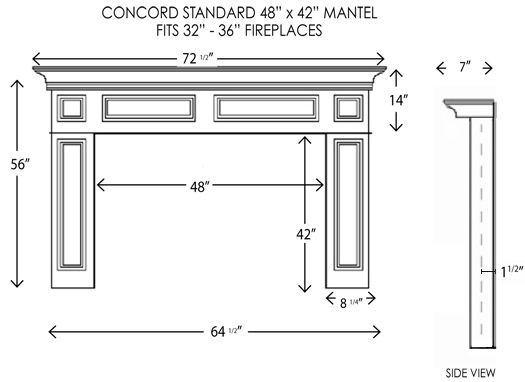
Materials and Styles of Fireplace Surrounds
The choice of materials and style for a fireplace surround significantly impacts its dimensions and overall appearance. Common materials include wood, stone, marble, and metal, each offering different aesthetic and functional qualities. For instance, wood surrounds, often crafted from oak, cherry, or pine, can be intricately carved and stained to match various décor themes. Stone surrounds, such as those made from limestone, granite, or slate, provide a more rugged and timeless look.
Marble surrounds are known for their elegance and can be polished to a high sheen, making them suitable for luxurious interiors. Metal surrounds, often made from cast iron or stainless steel, offer a sleek and contemporary appearance, ideal for modern and industrial-style homes. Each material has its standard dimensions, but customizations can be made to suit specific preferences and requirements.
The style of the surround also influences its dimensions. Traditional styles, such as Victorian or Colonial, often feature more elaborate designs with larger dimensions to accommodate intricate details and moldings. Modern and minimalist styles, on the other hand, typically have cleaner lines and smaller dimensions, focusing on simplicity and functionality.
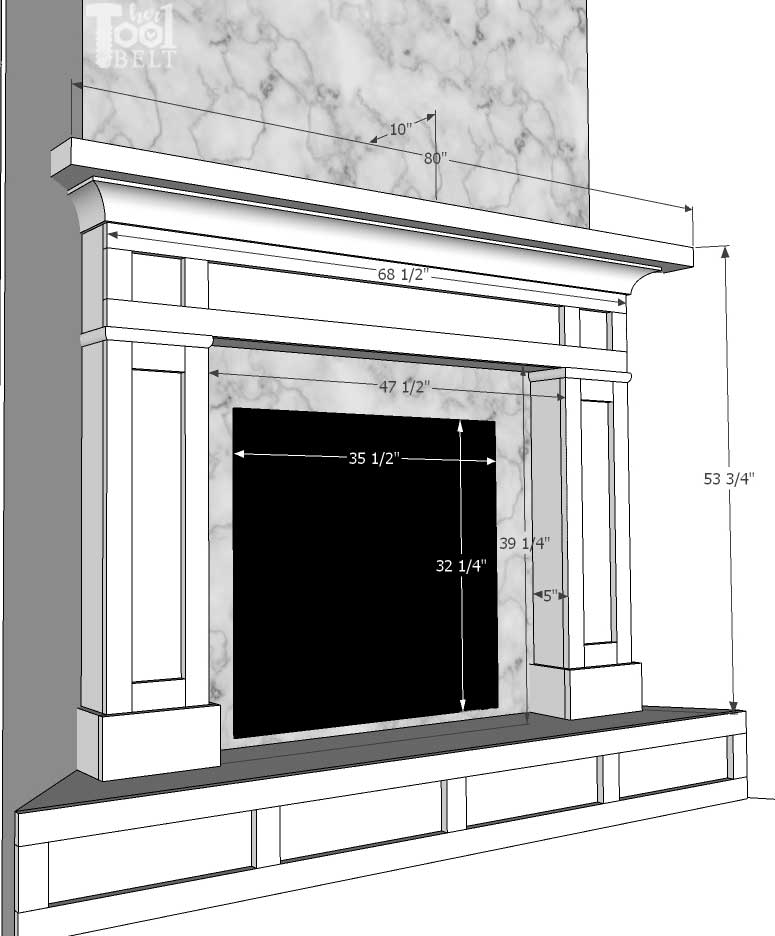
Customizing Fireplace Surround Dimensions
While standard dimensions provide a useful starting point, customizing the fireplace surround can ensure it perfectly fits the space and meets the homeowner’s preferences. Customization can involve altering the width, height, depth, or thickness of the surround to achieve a specific look or to accommodate unusual fireplace sizes.
When customizing, it’s important to consider the scale of the room. A large surround might overwhelm a small space, while a too-small surround could look out of place in a spacious room with high ceilings. Proportion is key to creating a harmonious design. Consulting with a professional designer or architect can help in making the right choices.
In addition to size adjustments, customization allows for the inclusion of unique design elements such as built-in shelves, integrated lighting, or personalized carvings. These features can enhance the functionality and aesthetic appeal of the fireplace surround, making it a truly unique focal point in the home.
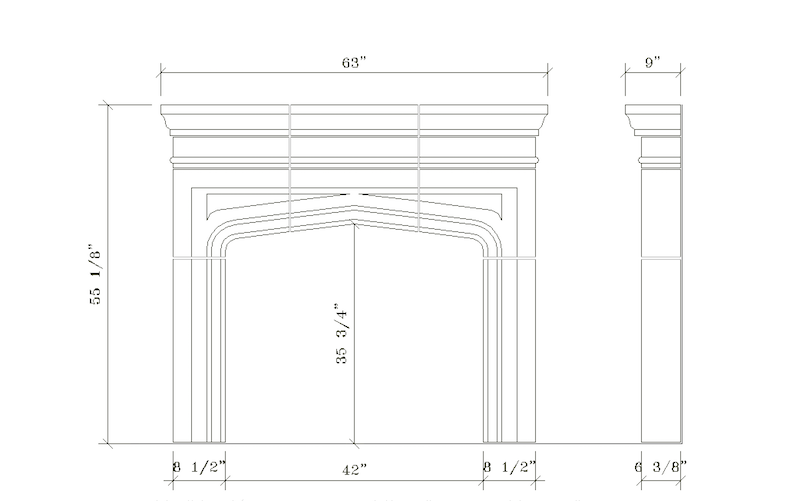
You May Want to Check These Articles:
- Shaker Style Fireplace Surround
- Gas Fireplace Surrounds and Mantels
- Edwardian Fireplace Surround
- Fireplace Hearth Surround
- Electric Fireplace Surrounds Plans
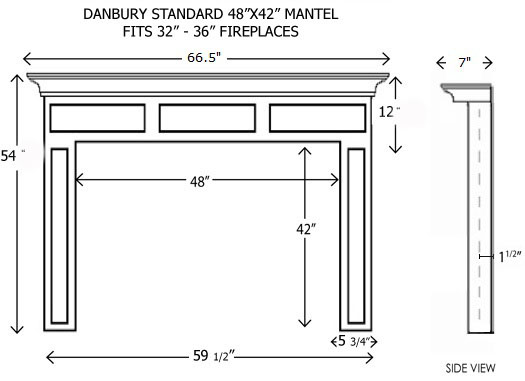
Common Mistakes to Avoid with Fireplace Surround Dimensions
Ignoring Building Codes and Safety Guidelines: One of the biggest mistakes is neglecting to adhere to local building codes and safety guidelines. This can result in unsafe installations and potential fire hazards. Always ensure that the surround dimensions maintain the required clearances from combustible materials and meet any other regulatory requirements.
Improper Scale and Proportion: Choosing dimensions that do not fit the scale of the room or the fireplace can lead to an unbalanced appearance. A surround that is too large can dominate the room, while one that is too small might not provide the desired visual impact. Carefully consider the proportions of the fireplace, the surrounding space, and the overall room design.
Overlooking Material Characteristics: Different materials have unique properties that can affect the surround’s dimensions and installation process. For example, stone and marble surrounds can be heavy and may require additional structural support. Failing to account for these factors can lead to installation challenges and potential damage.
Inadequate Ventilation and Heat Clearance: Ensuring proper airflow and heat clearance is crucial for both safety and efficiency. Inadequate dimensions can obstruct ventilation, leading to smoke backdrafts and poor combustion. Always follow manufacturer recommendations and consult professionals to determine the appropriate dimensions for optimal performance.

What are the standard dimensions for a fireplace surround?
Standard dimensions for a fireplace surround typically include a width of 48 to 60 inches, a height of 40 to 50 inches, and a depth of 6 to 12 inches. These measurements ensure a balanced appearance and adequate clearance around the fireplace opening, providing both safety and aesthetic harmony.
Can fireplace surrounds be customized to fit specific needs?
Yes, fireplace surrounds can be customized to fit specific needs and preferences. Customization allows for alterations in width, height, depth, and thickness to suit unusual fireplace sizes or desired design aesthetics. This can include unique features such as built-in shelves, integrated lighting, and personalized carvings.
How do different materials affect the dimensions of a fireplace surround?
Different materials, such as wood, stone, marble, and metal, have unique properties that can influence the dimensions of a fireplace surround. For instance, stone and marble surrounds may require additional structural support due to their weight. Each material offers different aesthetic qualities and functional characteristics that can impact the design and installation process.
Why is it important to consider building codes and safety guidelines when determining surround dimensions?
Adhering to building codes and safety guidelines is crucial to ensure the safe installation and operation of a fireplace surround. These regulations specify the necessary clearances from combustible materials and other safety requirements, helping to prevent fire hazards and ensure compliance with local laws.
How can I ensure the proportions of my fireplace surround are suitable for my room?
To ensure suitable proportions, consider the scale of the room, the size of the fireplace, and the overall design aesthetic. A balanced approach involves selecting dimensions that harmonize with the room’s architecture and décor. Consulting with a professional designer or architect can provide valuable guidance in achieving the right proportions for your fireplace surround.
Related Images for Inspirations



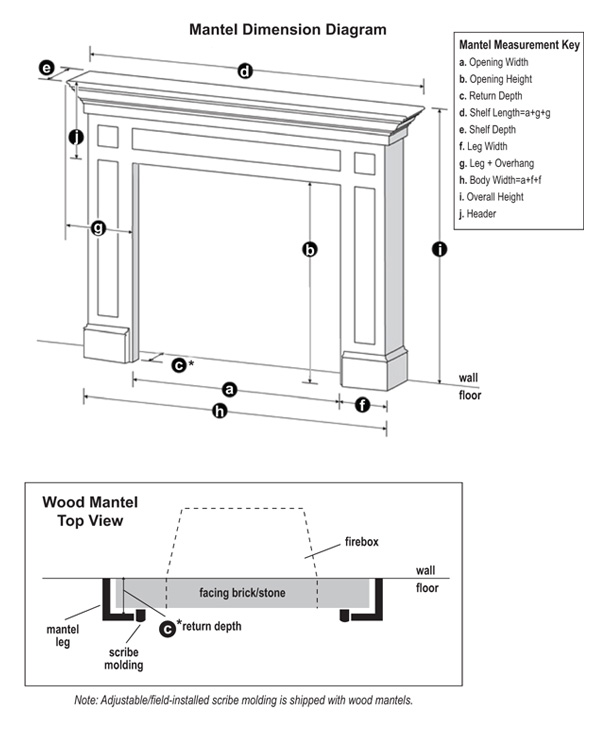
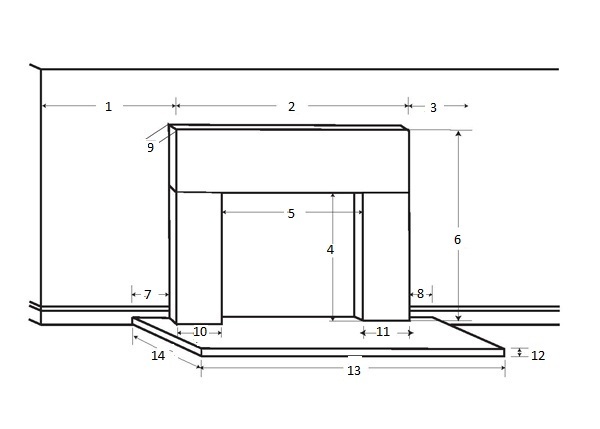

Choosing the perfect fireplace surround is a balancing act between aesthetics and practicality. While your style should guide your design, the standard dimensions of fireplace surrounds offer a valuable framework for ensuring a harmonious and functional fit. From the classic rectangular hearth to the elegant curves of a mantel, understanding these dimensions can help you navigate the world of fireplace surrounds and create a focal point that’s both beautiful and safe.
Related Posts: